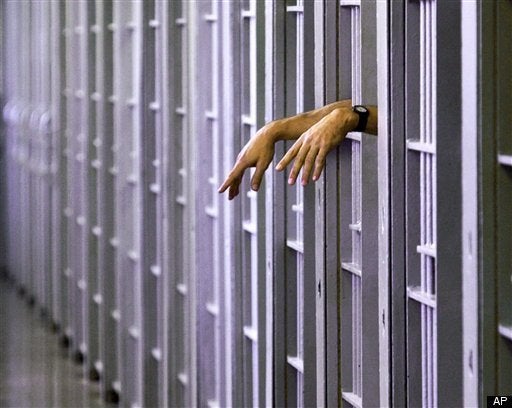
Around the turn of this century, I became one of those gay men whose recreational meth use turned occupational, as I turned to dealing to support my habit. After a novel's worth of drama (including successfully forging my own death certificate), I ended up being sentenced to 16 months in prison. With "half-time" I served nine and a half months, including four months at the California Institute for Men at Chino -- the very prison torn apart by rioting last weekend.
Chino is considered by inmates as one of the "armpits" of the California prison system, old and "shot-out," built on old cow pasture that wakes you up every morning with the smell of years-old manure wafting with the morning dew. As unpleasant as it was to be there, I did realize it was also an opportunity to observe a world few with my education and background ever see, and observe I did. I was even able to share my experiences in real time when my sister offered to start a blog for me, daily typing up the entries I sent her.
The overcrowding at Chino was such that I was first placed in a disciplinary unit with an Aryan supremacist doing extra time for making homemade knives. There was nowhere else to put me. The conditions on the tier were horrific -- a deafening din from dawn till lights-out that severely tested my sanity for the one week I was there. When I was finally able to tell a sympathetic guard while going to take a shower that I was gay and HIV+, I was immediately transferred to protective custody. We were crammed into a former gym, but at least I was safe.
After a month there I was transferred to a dorm where I barely dodged the "tax" on packages from home routinely levied on gay prisoners. I had to let them know I would fight -- even though I wouldn't have -- and scare them with the prospect of being infected with my blood. With some judicious generosity from my well-stocked lockers, I eventually won over the head of the whites, and was able to serve out the rest of my sentence without a scratch.
I was in Chino in 2004, several years before the court orders to desegregate the California prison system. As a matter of official policy, everything broke down along racial lines. You were assigned a cell or bunk beds with a member of your own race, always ate together in the same section of the cafeteria, had the days your race controlled the TV, etc. The "shotcaller" would enforce discipline within his race, calling meetings and negotiating with other shotcallers when there were intra-racial issues. When I wanted to use the clippers, my shotcaller had to negotiate with the Latins and the black shotcallers, whose "dawgs" were paranoid about HIV transmission. Ignorance rules in prison.
The possibility of "trouble" was frequently discussed, as if a riot could break out at any moment. It was only during my last month that I told my shotcaller that I would not fight under any circumstances. Not only was I nonviolent to the core (even as a drug dealer) but I had gotten to know the black and Latin guys on either side of me and liked them a lot better than most of the white guys.
I was told that non-fighters were punished after riots were over. But I knew there were many others like me who just wanted to do their time and get out of there, who dreaded being told they would have to beat someone up or be beat up themselves.
There are too many things wrong with the prison system to possibly cover in one blog entry, but there is one constructive step that I'd like to propose. While inmates are being integrated on the basis of race, they should also be segregated on the basis of something else: a commitment to nonviolence.
Those inmates willing to sign a statement committing to nonviolence and a rejection of racial politics during their sentence would be housed separately from those unwilling to do so. These "N" inmates would get extra privileges, like Saturday mail and more phone time. They could bunk or cell with any race. Any "N" inmate caught in a fight would be sent to housing in which inmates had not signed a pledge, where they could continue to fraternize exclusively with their own race, etc.
Most prisoners come from backgrounds where corporal punishment is a given and violent resolution of differences is the norm. A large plurality of them would not choose the "N" classification. What makes prison tolerable for them is the almost military camaraderie they find when they "have the back" of other inmates they often know from the streets or previous sentences. It is the closest they get to friendship.
But what of the inmate who wants to "opt-out" of such a system? Shouldn't there be a fundamental right to be nonviolent? In the California prison system, inmates are deprived of that right routinely.
An "N for Nonviolent" classification system needs to be seriously studied and implemented, particularly as a reduction in violence could lower costs. And an atmosphere in which inmates are encouraged to treat each other humanely on the inside could prove an essential step to changing their behavior toward the rest of the world after they are released.
